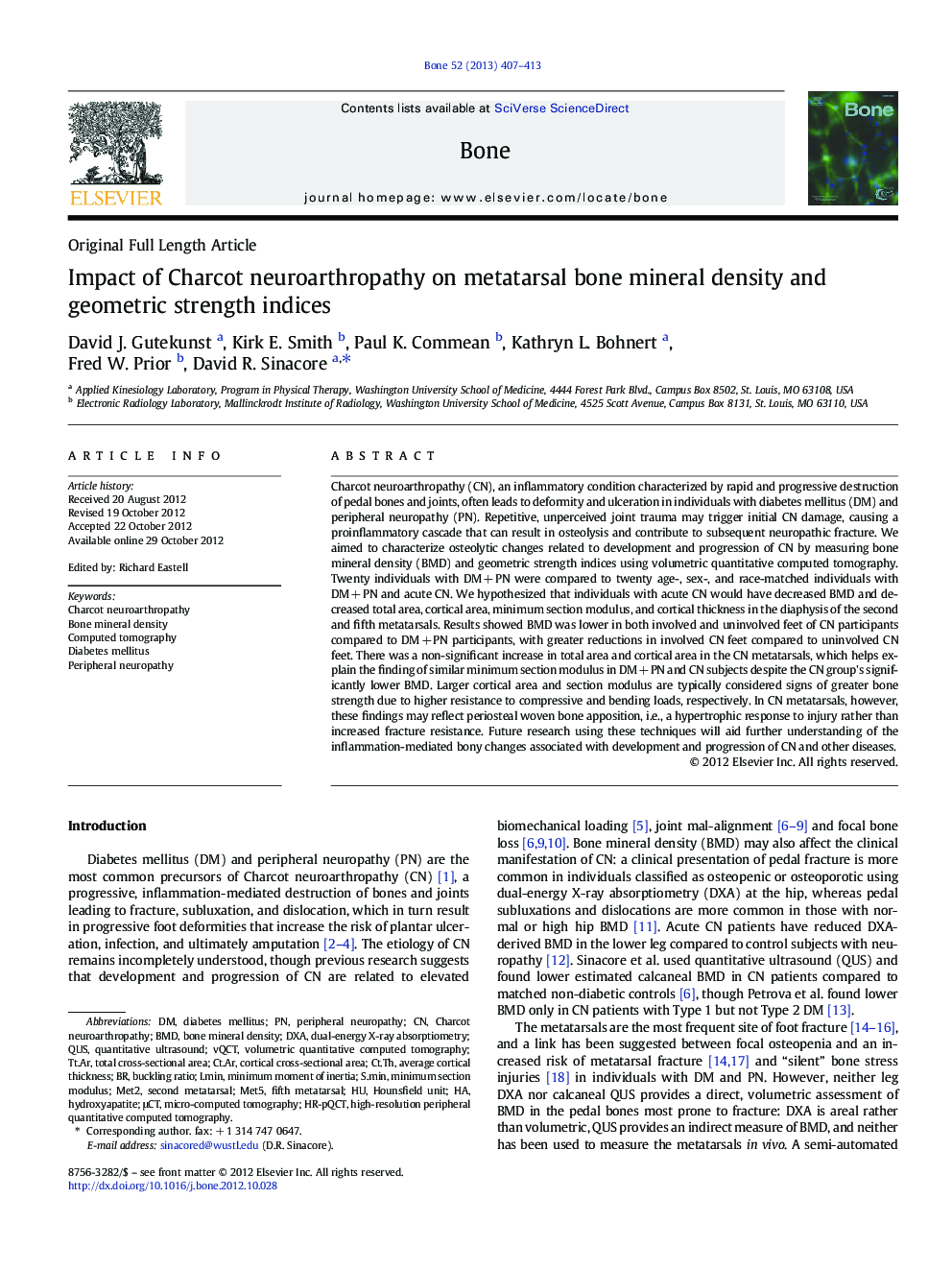| Article ID | Journal | Published Year | Pages | File Type |
|---|---|---|---|---|
| 5891428 | Bone | 2013 | 7 Pages |
Abstract
⺠Quantitative computed tomography image processing techniques were used to assess foot bone strength noninvasively in acute Charcot neuroarthropathy. ⺠BMD was lower in Charcot patients versus diabetic, neuropathic controls, but indices of compressive and bending strength were maintained. ⺠Geometric results may reflect an inflammation-mediated response to bone injury rather than true maintenance of bone strength. ⺠Clinical quantitative computed tomography precludes clear discernment between functional bone adaptation and injury response, such as woven bone apposition. ⺠Improved spatial resolution will clarify the effects of Charcot neuroarthopathy on lower extremity bone strength and fracture risk.
Keywords
Ct.ThTt.ArμCTBMDMet2DXAQUSsecond metatarsalHR-pQCTCt.ArBone mineral densityMicro-computed tomographyHigh-resolution peripheral quantitative computed tomographycomputed tomographydual-energy X-ray absorptiometryDiabetes mellitusQuantitative ultrasoundBuckling ratioCharcot neuroarthropathyHydroxyapatitehounsfield unitperipheral neuropathyFifth metatarsaltotal cross-sectional area
Related Topics
Life Sciences
Biochemistry, Genetics and Molecular Biology
Developmental Biology
Authors
David J. Gutekunst, Kirk E. Smith, Paul K. Commean, Kathryn L. Bohnert, Fred W. Prior, David R. Sinacore,
